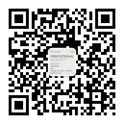| 基金项目:湖南省卫生健康委研究项目(D202314048475) |
|
| 摘要点击次数: 219 |
| 全文下载次数: 94 |
| 中文摘要: |
| 目的 探讨4R问题分析法结合反向教学在小儿手术室护理教学中的应用。方法 本研究将2020年8月至2022年8月分配到湖南省儿童医院手术室实习的护生480人作为研究对象,按进科先后顺序分为对照组和观察组,每组240人。对照组采用传统教学,观察组采用4R问题分析法结合反向教学。实习结束后比较两组实习护生的综合能力考核成绩、护理教学认可度及教学满意度。采用SPSS 22.0进行t检验和卡方检验。结果 观察组实习护生理论知识、基本护理技能、手术室专科护理技能及综合护理技能考核成绩得分均明显高于对照组,差异有统计学意义(P<0.05)。观察组实习护生护理教学认可度明显优于对照组,差异有统计学意义(P<0.001)。两组实习护生教学满意度比较差异有统计学意义(χ2=118.35,P<0.001)。结论 4R问题分析法结合反向教学可有效提高小儿手术室实习护生的护理教学质量和教学满意度,使实习护生更好地掌握理论和实践技能。 |
| 英文摘要: |
| Objective To explore the application of the 4R problem analysis method combined with reverse teaching in nursing teaching in the pediatric operating room.Methods In this study, 480 nursing students who were assigned to the operating room of Hunan Children's Hospital for internship from August 2020 to August 2022 were selected as research subjects. They were divided into control group and observation group in order of admission, with 240 students in each group. The control group received traditional teaching, while the observation group received the 4R problem analysis method combined with reverse teaching. At the end of the internship, the two groups were compared for comprehensive ability assessment scores, recognition of nursing teaching, and degree of satisfaction with the teaching. The t-test and χ2 test were performed using SPSS 22.0.Results The scores of theoretical knowledge, basic nursing skills, specialized nursing skills in the operating room, and comprehensive nursing skill assessment of the observation group were significantly higher than those of the control group (P<0.05). The recognition of nursing teaching among the nursing interns in the observation group was significantly higher than that in the control group (P<0.001). There was a significant difference in the degree of satisfaction with the teaching between the two groups of nursing interns (χ2=118.35, P<0.001).Conclusions The 4R problem analysis method combined with reverse teaching can effectively improve the nursing teaching quality and the degree of satisfaction with the teaching among nursing interns in the pediatric operating room, enabling them to better grasp theoretical and practical skills. |
|
查看全文 查看/发表评论 下载PDF阅读器 |
|
| 关闭 |
|
|
|
